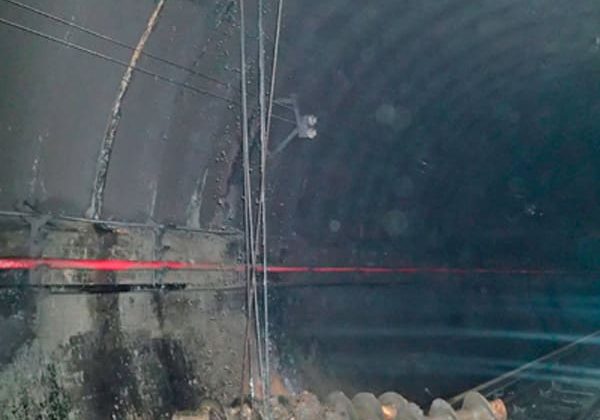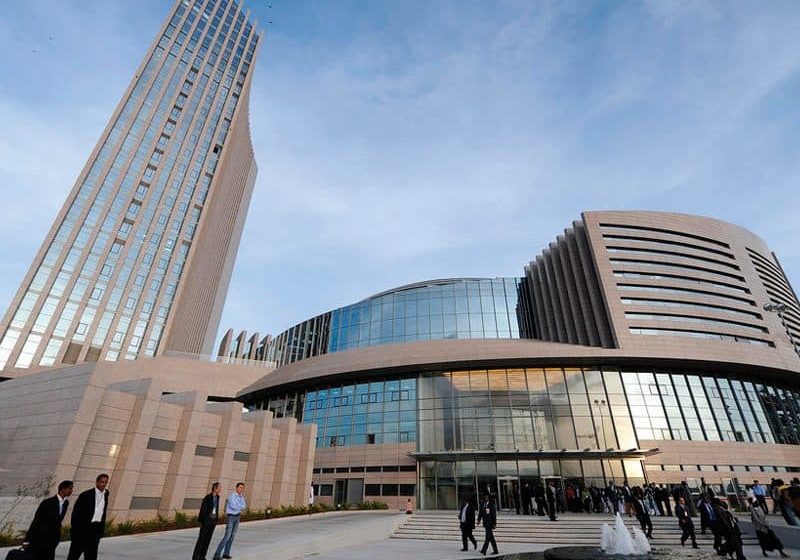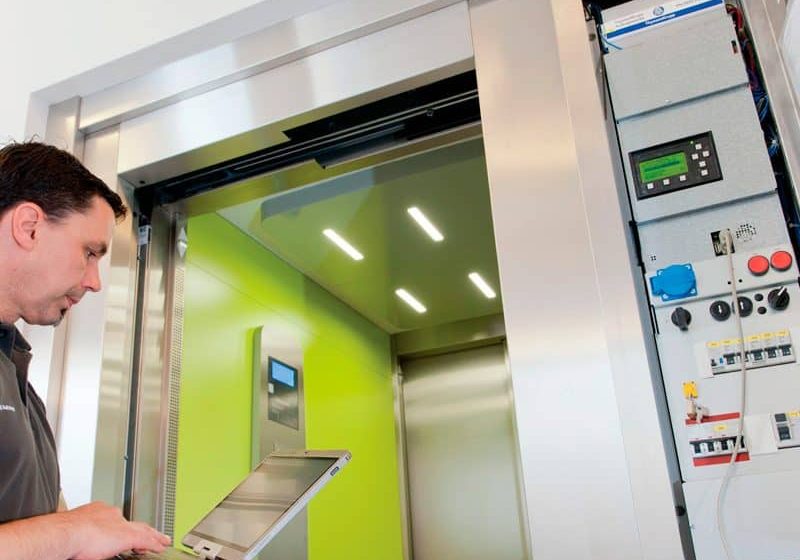Rising to the Challenge
Feb 1, 2014

ThyssenKrupp Elevator takes its Evolution lifts farther and higher to meet the needs of Luanda, Angola, tower.
The special requirements of the 31-floor, 120-m- tall Banco Espírito Santo Angola (BESA) Tower in Luanda, Angola, drove a ThyssenKrupp Elevator team to take its Evolution® machine-room-less (MRL) lifts further than they have ever gone, paving the way for a rooftop heliport. Alexandre Caseiro, project manager with ThyssenKrupp Elevadores S.A. Sucursal de Angola, recalls:
“This was a really interesting project as a whole, and it soon became clear that the challenges of engineering, logistics and assembly would be huge. Right from the start, we had to take into account the variables of assembling elevators in an African country (Angola) with a complicated logistical process and very little skilled local labor. Three MRL [elevators] had to overcome a distance exceeding 120 m. We can even say that this type of equipment (Evolution) is unique in ThyssenKrupp, if we think in terms of speed and distance traveled. This led to a close collaboration between the Department of Engineering [of] ThyssenKrupp Portugal and the ThyssenKrupp factory in Neuhausen, which took two months to develop the solution.”
Launched in the 1990s, Evolution is ThyssenKrupp Elevator’s original MRL product. It is capable of traveling up to 80 m at 2.5 mps. The new Evolution can reach 100 m, also at 2.5 mps. The team for this project, however, ended up developing the first Evolution capable of reaching 3 mps. The Evolutions for BESA were designed specifically for it and are not yet certified as a standard model.
The two-month planning period of the job, ThyssenKrupp points out, is very short when one considers the project’s complexity. The BESA Tower has nine elevators, three of which are MRL – two “VIP” (executive) units that make 26 stops from floors -1 to 25 and travel 109 m, and a freight and materials elevator that has 32 stops and travels a distance of 122 m. All nine units, whether MRL or not, travel at 3 mps and have a capacity of 1275 kg. Three elevators each at the car park and within the building’s core, topped by a machine room, move people throughout the building. A Destination Selection Control System (DSC) integrates both these and the three MRL units. Importantly, use of the MRL units opened up space for the building’s owners, thereby allowing for construction of (and access to) a rooftop heliport. The heliport sits directly atop the elevator shafts.
Other interesting facts include:
- Materials were transported in 18 40-ft. containers by ship from the ThyssenKrupp factory in Germany.
- It took seven months to assemble the freight and materials MRL lift.
Due to the project’s complexity, an onsite team oversaw project management, transportation and assembly. Splitting the supply into two groups – guide rails, doors and fixtures on one side, and machines, suspension elements, cars and controllers on the other – allowed assembly to start on time, despite the fact that all materials were not on location. Caseiro elaborates:
“We decided to assemble the lifts using the ‘false car’ method. But, the solutions that existed in the market were not versatile enough and were extremely expensive, so we built our own false car in partnership with a supplier of lift components. One of the requirements of the false car was for it to be adaptable for different distances between the two car guide rails. Obviously, we had a lot of security requirements, but, in the end, we could also certify all this equipment. And now, when we talk about high-rise elevators, this tool is almost a requirement, since it provides a lot of comfort and security for our subcontractor teams. This results in gains of time and [value].”
Rather than the usual process of workers filling gaps between doors with masonry floor by floor after mechanical part assembly, the team utilized an alternate method that avoided work stoppage. “We noticed that in our standard residential elevators, we use a method that consists of the use of polyurethane between two thin aluminum plates (PIR-ALU), which serves to fill the gap between floors,” Caseiro said. Bricks are then placed – not forced – in front of the PIR-ALU, he said. Among the advantages to this method is that it allows workers to install electrical parts immediately after mechanical parts.
Taking its MRL units to the next level was an integral part of the success of the BESA Tower project, according to ThyssenKrupp. As manufacturers continue to be measured by the quality of their MRL lifts, ThyssenKrupp said it is among those committed to taking its units faster and higher.
Get more of Elevator World. Sign up for our free e-newsletter.








